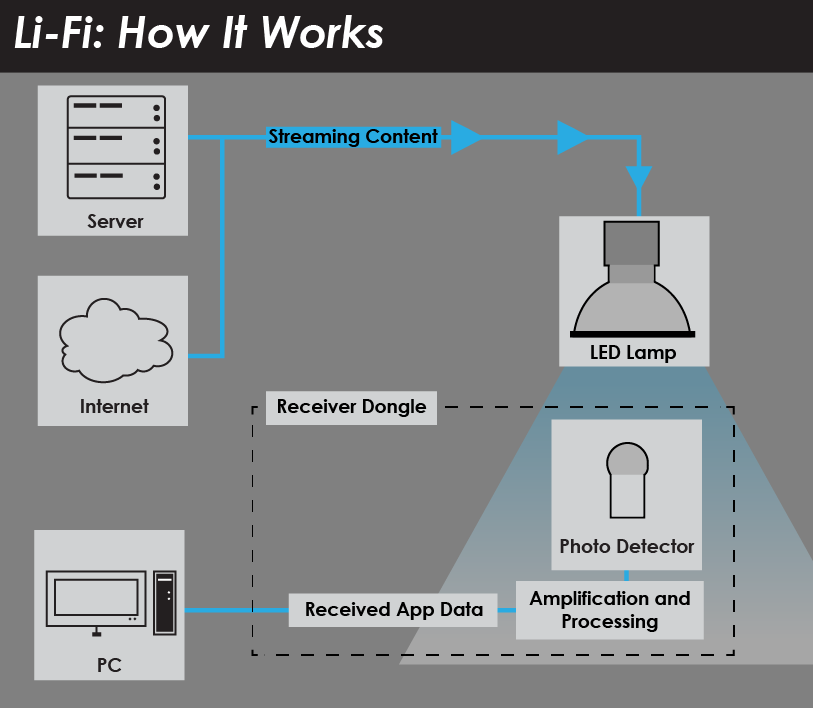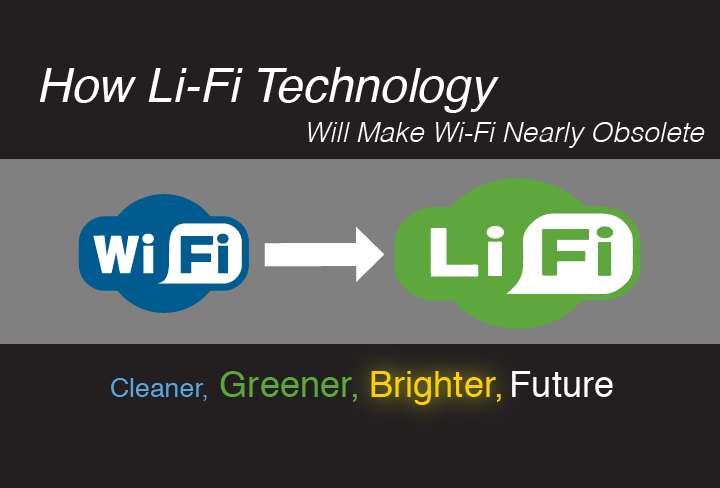In the near-future, you may find yourself looking for the nearest LED light to connect the internet.
Researcher Harald Haas from the University of Edinburgh has made it possible to transform LED light into an electrical signal that can provide high-speed data streaming.
This means that pedestrians walking down a street illuminated with LED lights could very well be able to surf the internet without interruptions. Public infrastructure like hospitals, police stations, and libraries that utilize LED as their primary light source could easily be able to provide internet users with Li-Fi connections.
Researcher Harald Haas who works from the Alexander Graham Building states that “All the components, all the mechanisms exist already…You just have to put them together and make them work”. If his optimism proves true, you might be searching for the nearest Li-Fi hotspot to connect to the internet.
During the IEEE Phototonics Conference this past October, members of the consortium were able to “create a system that could both send and receive data at aggregate rates of 100 megabits per second. When transmitting in one direction only, they reached a rate of 155Mb/S. [They have also] created a better LED, which provides a data rate close to 4 gigabits per second operating on just 5 milliwatts of optical output power and using high-bandwidth photodiodes at the receiver.”

In his 2011 Ted Talk, the researcher highlights that we “have more than five billion [mobile devices]… [and] transmit more than 600 terabytes of data every month”. Since radio waves are scarce and expensive, the researcher suggests migrating to the visible light spectrum for wireless communication. The visible light spectrum is several times wider than the radio wave spectrum and would allow Li-Fi to offer faster connections than Wi-Fi.
These advancements however, do not entail that Li-Fi will replace Wi-Fi technology. The new technology comes with limitations. Physical barriers that block a direct light source can interfere with a connection and wireless communication in the dark is practically impossible.
The accelerated performance of Li-Fi exhibits the same downsides that 802.11ad wireless connections experiences–both modes of connections are fast but experience a limited physical range of a few meters. Therefore, Li-Fi will work alongside with Wi-Fi networks in the same way that 802.11ad wireless connections will work in conjunction with 802.11n connections.
IEEE spectrum reveals that “Haas…expects LEDs to evolve past just being light sources, much the same way the cell phone evolved from a communications device to a mobile computer. “In 25 years, every light bulb in your house will have the processing power of your cell phone today,” he says. Haas envisions that illumination will just be one of the many features that LED will offer.
It seems that the future of the internet will bring a myriad of ways to connect to the internet. Elon Musk announced just last week that his latest endeavor includes launching satellites that will provide “unfettered internet access to the masses”.
Would you utilize an LED internet connection?
Let us know what you think! Leave us a comment below.



